 Slide 5-16
Slide 5-16

 Slide 5-16
Slide 5-16
The third orthogonal dimension refers to the extent that the behavior represents the equilibrium between two controlling functions.
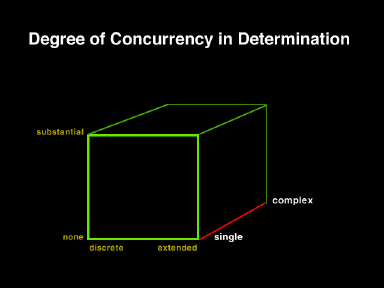 Slide 5-17
Slide 5-17
This dimension can vary from a behavior under the control of only a single factor, to behavior under the control of two or more schedules simultaneously.
 Slide 5-18
Slide 5-18
Here we see no concurrence. In this case, one behavior is under the control of one schedule (or what is for all intents and purposes only a single schedule, in some sense nothing occurs in isolation). The illustration shows a variable-interval schedule on one key.
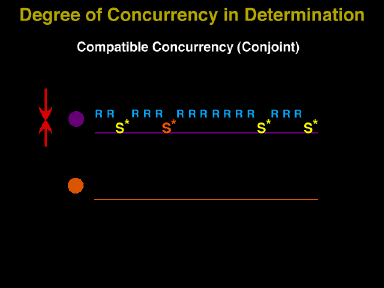 Slide 5-19
Slide 5-19
In this illustration, we see compatible concurrency, or a conjoint schedule. An example would be two different schedules providing consequences for the same behavior to a single key.
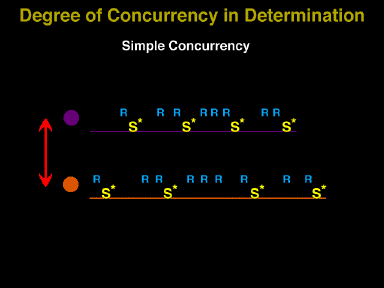 Slide 5-20
Slide 5-20
This frame illustrates two different schedules running simultaneously, each requiring a different and incompatible response. The obtained behavior is the equilibrium solution of these two competing demands, sometimes the upper behavior occurs, sometimes the lower behavior occurs.
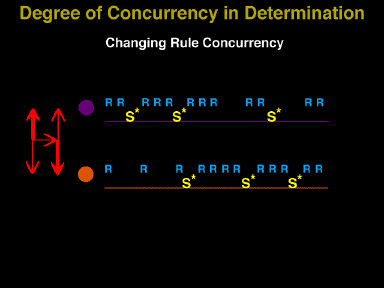 Slide 5-21
Slide 5-21
In this case, the relative payoff available on each schedule systematically changes over time. The illustration is an initial reinforcement bias for the top schedule which shifts to a bias for the bottom schedule. Presumably, behavior shifts accordingly.
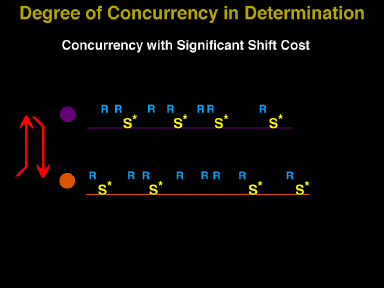 Slide 5-22
Slide 5-22
In this final case, a shift cost is added to switching between schedules. A simple example would be increasing the physical distance separating the two workplaces. If they were many minutes of traveling apart, then the cost of changing would be relatively high and that cost would occur "up front."